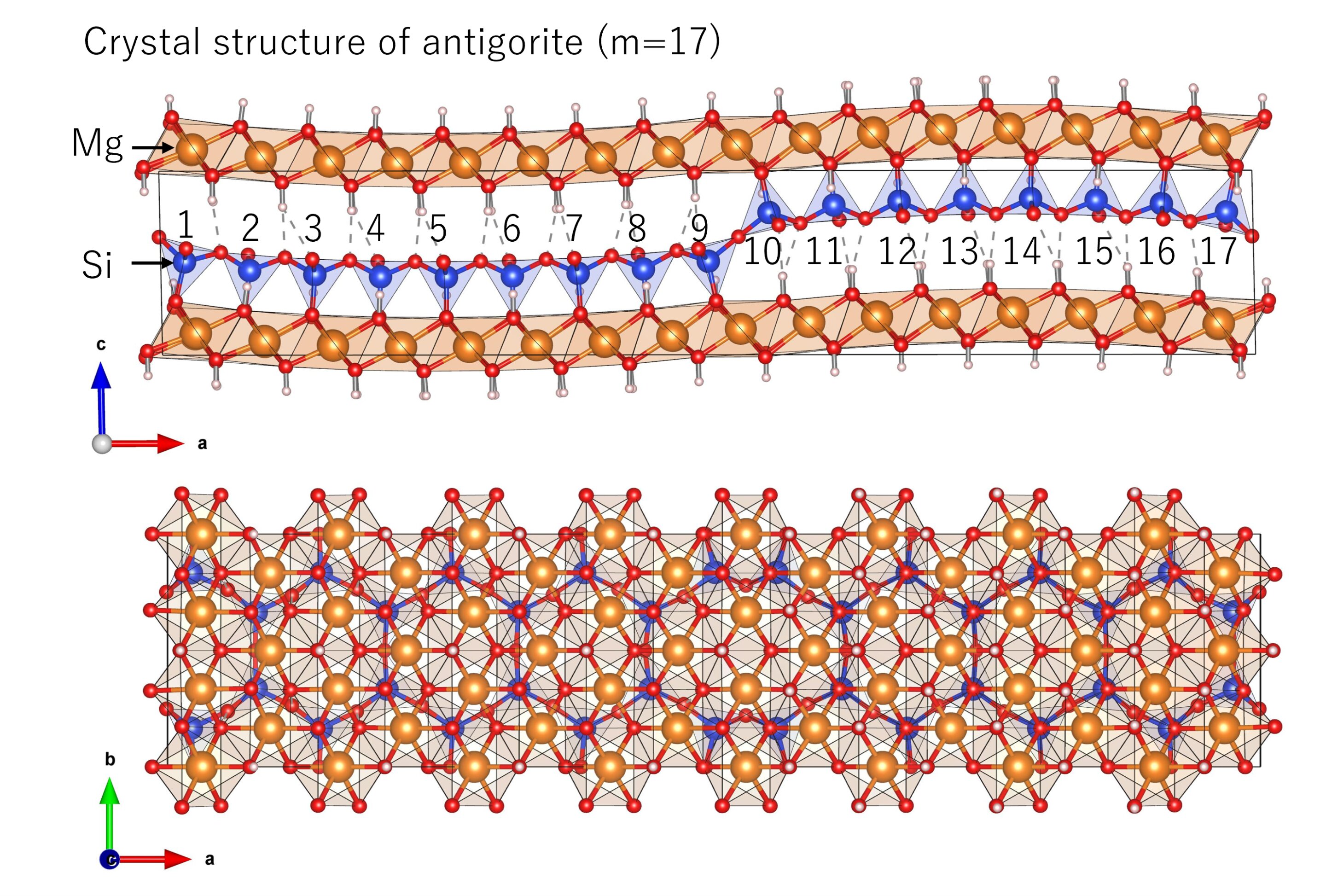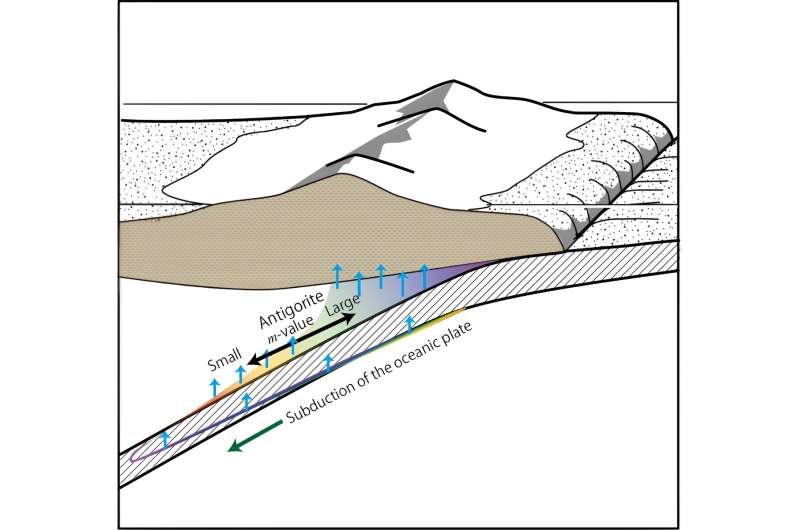Investigations into the polysomatism of antigorite under pressure


The crystal structure of antigorite with m=17. The number of tetrahedra within one wavelength along the a-axis represents the m-value. Orange: Mg, Blue: Si, Red: O, Pink: H. Image credit: Jun Tsuchiya, Ehime University
Antigorite is a type of serpentine, the most abundant hydrated mineral on Earth. It is generally believed that this mineral is the main water carrier deep into the Earth during subducting oceanic plates. It has a wave-like structure along the a-axis and several polysomes with different m-values (m=13–24) have been identified in nature (polysomatism).
The m value is defined as the number of tetrahedra contained in one wavelength and is controlled by the difference in length between the octahedral layer and the tetrahedral layer.
This length is mainly determined by the size of the MgO.6 Octahedron and SiO4 tetrahedron and are therefore expected to vary as a function of pressure and temperature. However, it is not well understood how the m-value of antigorite changes under the high pressure and temperature conditions in the Earth.
In this study, the researchers used the first principles method to calculate the free energy (enthalpy) of antigorites with different m-values (m=14–19) under pressure and compared the stability of antigorites with different m-values. The study was published in Journal of Geophysical Research: Solid Earth.
As a result, it was found that the m value of the most stable antigorite gradually decreases. In other words, with increasing pressure, antigorite gradually dehydrates and adopts a structure with a shorter wavelength.

The present results show that the m-value of antigorite tends to decrease under high pressure. Therefore, the m-value of antigorite is expected to decrease with increasing depth in subduction zones. Image credit: Jun Tsuchiya, Ehime University
This suggests that the structure of antigorite in the oceanic lithosphere may gradually evolve into a polysome with a smaller m value, different from the antigorite observed under ambient or near-surface pressure conditions (i.e., m = 17).
Such changes in m-values are associated with minor dehydration reactions. Changes in the amount of water in rocks and minerals due to the polysomatism of antigorite in subduction zones may affect the distribution of intermediate depth earthquakes such as those observed in the double seismic zone.
More information:
Jun Tsuchiya et al., First‐principles investigations of antigorit polysomatism under pressure, Journal of Geophysical Research: Solid Earth (2024). DOI: 10.1029/2023JB028060
Provided by Ehime University
Quote: Investigations into the polysomatism of antigorite under pressure (July 5, 2024), accessed July 5, 2024 from https://phys.org/news/2024-07-polysomatism-antigorite-pressure.html
This document is subject to copyright. Except for the purposes of private study or research, no part of it may be reproduced without written permission. The contents are for information purposes only.



